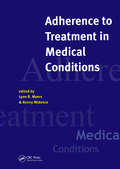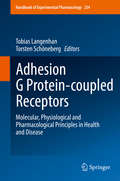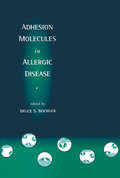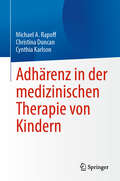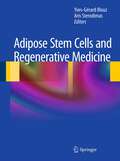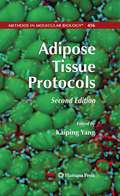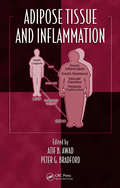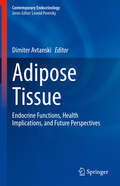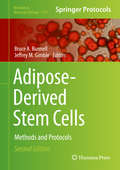- Table View
- List View
Adequacy of the VA Persian Gulf Registry and Uniform Case Assessment Protocol
by Committee on the Evaluation of the Department of Veterans Affairs Uniform Case Assessment ProtocolAs mandated in Public Law 103-446, the Department of Veterns Affairs (VA) asked the Institute of Medicine (IOM) to review its Uniform Case Assessment Protocol (UCAP) for Persian Gulf veterans. The purpose of the program is to provide a systematic, comprehensive medical protocol for the diagnosis of health problems of Persian Gulf veterans. This report is the third in a series of studies by IOM reviewing the protocols used by the VA and the Department of Defense to diagnose the health complaints of Gulf veterans. The committee reviews and makes recommendations concerning the adequacy of the medical protocol and its implementation by the VA, as well as the VA's outreach and education efforts aimed at informing Persian Gulf veterans and their care providers of the purpose and availability of this program. In addition, the report contains as appendixes the findings and recommendations of the previous reports, as well as those of two related IOM reports on Health Consequences of Service During the Persian Gulf War.
Adequate Food for All: Culture, Science, and Technology of Food in the 21st Century
by Wilson G. Pond Buford L. Nichols Dan L. BrownFood is the sustenance of life. But while we understand that a secure supply of food has been affected by many factors over the course of history, we do not often allow ourselves to entertain the idea that a lack of adequate food worldwide is a very real and dangerous possibility. While soil degradation, water distribution, climate change, populati
Adherance to Treatment in Medical Conditions
by Lynn MyersPoor adherence or compliance to treatment has major medical, psychological and economic consequences. This monographs provides comprehensive coverage of issues and research in the area of adherence and treatment in medical conditions. It covers all aspects within this field and includes chapters on the role of doctor-patient communications; memory; adherence in specific groups, such as children and the elderly; adherence to different treatments, such as diet and exercise; and reviews of adherence in specific conditions, such as diabetes and asthma.
Adherence in Dermatology
by Scott A. DavisAn essential, comprehensive, and practical guide to understanding, measuring, and modifying patients' adherence behavior to optimize treatment outcomes, this book covers all major aspects of adherence in dermatology. The first section describes current knowledge on the magnitude and impact of nonadherence; the second outlines measuring adherence in the context of databases, trials and practice. The third section addresses adherence in key skin diseases and the fourth covers numerous strategies to improve adherence by mitigating specific patient barriers. All sections emphasize ways to optimize communication with patients: the foundation for producing successful health behavior change. Low adherence helps explain why, despite effective treatments existing for all major dermatologic conditions, many patients still fail to improve. When clinicians endeavour to maximize adherence, with the aid of evidence-based strategies, these drugs will often realise their potential. This book devotes special attention to understanding why individuals may be nonadherent, so that each patient can receive a suitable treatment regimen, with a personalized plan of action. This book is designed for clinicians at all levels, serving as both introductory training for medical students and residents, and an update on the field for experienced practitioners. Researchers and policymakers will also benefit from its coverage of research methods and the impact of nonadherence in specific diseases. Adherence in Dermatology bridges the gap between outcomes researchers and clinicians by explaining the latest findings in plain language, with examples from everyday dermatologic practice.
Adherence to Antiretroviral Therapy among Perinatal Women in Guyana: Challenges and Lessons for Developing Nations
by Debbie VitalisThe book documents the history of the prevention-of-mother-to child transmission of HIV (PMTCT) program in Guyana, as well as the impact of HIV on pregnant and postpartum women’s adherence to antiretroviral therapy (ART). The book shows research work by reviewing the literature to investigate relevant adherence studies, presenting in-depth interviews on adherence perspectives of clinic patients and healthcare providers, and a cross-sectional descriptive study of pregnant women that investigated general adherence to pregnancy-related behaviours and ART, and the efficacy of a theoretical model (Health Belief Model) to understand and predict ART adherence within this group. Author discusses the factors affecting ART adherence among pregnant and postpartum women, since existing studies may not account for cultural and other local variations. The findings provide insight into the local situation, and will also inform policy and practice in Guyana, and the wider Caribbean Community (CARICOM).
Adherence to Pediatric Medical Regimens (Issues in Clinical Child Psychology)
by Michael A. Rapoff Christina Duncan Cynthia KarlsonThe third edition of this book provides comprehensive coverage of pediatric medical adherence, including such important topics as the extent of nonadherence and medical consequences, predictors of adherence, theories about adherence and clinical applications, and assessment strategies for adherence and health outcomes. In addition, chapters describe strategies for improving adherence, review research studies on improving adherence, and address ways to improve research on adherence for children and adolescents with chronic diseases. The new edition also examines the developmental aspects of adherence assessment and intervention as well as cultural, ethical, and legal issues in adherence research and practice. Key areas of coverage include: Consequences of nonadherence and correlates of adherence. Developmental aspects related to assessing and improving pediatric medical adherence. Assessing pediatric disease and health status. Cultural, ethical, and legal issues related to pediatric medical adherence. Adherence to Pediatric Medical Regimens, Third Edition, is an essential reference for researchers, professors, and graduate students as well as clinicians, therapists, and other practitioners in developmental, clinical child and school psychology, child and adolescent psychiatry, pediatrics and pediatric psychology, social work, public health, health psychology, and all interrelated fields.
Adherence to Pediatric Medical Regimens (Issues in Clinical Child Psychology)
by Michael A. RapoffIt used to be called noncompliance, and the patients themselves referred to as difficult. But regardless of the terminology, children's reluctance or failure to commit to prescribed regimens reduces the effectiveness of treatment, often leading to additional care, higher costs, and serious, even deadly, complications. Reflecting a single, authoritative voice, the Second Edition of Adherence to Pediatric Medical Regimens analyzes in comprehensive clinical detail the factors that affect children's and teens' commitment to treatment - from developmental issues to the influence of parents, peers, and others in their orbit - and offers empirically sound guidelines for encouraging adherence. It cautions against viewing young clients as miniature grownups or scaling down adult data, advocating instead for a more nuanced understanding of the population and a collaborative relationship between practitioner and client. Critical areas of interest to clinicians and researchers in pediatrics are brought into clear focus as the book: Provides an overview of adherence rates to chronic and acute disease regimens and examines common adherence problems in children and adolescents. Details consequences of nonadherence and correlates of adherence. Critiques major adherence theories and their clinical implications. Discusses the range of adherence assessment measures. Reviews educational, behavioral and other strategies for improving adherence. Offers ways to translate research into pediatric medical adherence. This updated edition of Adherence to Pediatric Medical Regimens is an essential reference for anyone concerned with improving health outcomes in young people, especially clinicians, researchers, and graduate students in psychiatry as well as pediatric, clinical child, and health psychology.
Adherens Junctions: From Molecular Mechanisms To Tissue Development And Disease (Subcellular Biochemistry #60)
by Tony HarrisCell-cell adhesion is fundamental for the development and homeostasis of animal tissues and organs. Adherens junctions (AJs) are the best understood cell-cell adhesion complexes. In this volume, a group of internationally recognized experts reviews AJ biology over a wide range of organization; from atoms to molecules, to protein complexes, molecular networks, cells, tissues, and overall animal development. AJs have also been an integral part of animal evolution, and play central roles in cancer development, pathogen infection and other diseases. This book addresses major questions encompassing AJ biology. * How did AJs evolve? * How do cadherins and catenins interact to assemble AJs and mediate adhesion? * How do AJs interface with other cellular machinery to couple adhesion with the whole cell? * How do AJs affect cell behaviour and multicellular development? * How can abnormal AJ activity lead to disease?
Adhesion G Protein-coupled Receptors: Molecular, Physiological and Pharmacological Principles in Health and Disease (Handbook of Experimental Pharmacology #234)
by Tobias Langenhan Torsten SchönebergLatest research on Adhesion GPCRs has unearthed surprising revelations about the events that govern the signal transduction of these receptor molecules and the cellular and organ requirements for these signals. Unexpected and unprecedented findings suggest that Adhesion GPCRs constitute a group of receptors that sense mechanical stimuli and transcode them into metabotropic signals through the action of a novel activation paradigm. Interdisciplinary efforts transcending many areas of biomedical research including pharmacology, physiology, genetics, cell biology, structural biology, biochemistry and bioinformatics were necessary to unveil these fundamental properties. The scientific leaders in the field that carried this research effort have teamed up here to provide a comprehensive overview of our current understanding, how Adhesion GPCRs signal and how these receptors shape organ structure and function.
Adhesion Molecules in Allergic Disease
by Bruce S. BochnerThis unique resource-the first book of its kind exclusively devoted to the subject-offers timely coverage of the cells, mechanisms, and proteins involved in allergic inflammation, emphasizing the latest advances in local cell recruitment.
Adhesive Interactions in Normal and Transformed Cells
by Yury A. RovenskyAdhesive Interactions in Normal and Transformed Cells describes the basic mechanisms of the ability of tissue cells to attach to each other and to the extracellular matrix. These adhesive interactions are pivotal regulators of main cellular functions, such as proliferation, survival and migration. The adhesive interactions are involved in embryonic development, regeneration, and also in inflammation and degeneration processes, which are at the basis of many diseases. Serious alterations in cell adhesion caused by the oncogenic transformation play a key role in cancer invasion and metastasis. This volume provides comprehensive information about structural, mechanistic and signaling aspects of adhesive interactions in both normal and cancer cells in comparison. Integration of such aspects of the adhesive process as structure, relation to cell systems of receptors and cytoskeleton, function, signaling pathways, and the alterations in tumor cells constitutes the strongest point of this work. The results of the long-time author's research are included in the book. The author was one of pioneers, who used scanning electron microscopy (SEM) to study the cell surface morphology of normal cultured cells and the cells underwent the oncogenic transformation, processes of their attachment to and spreading on the surfaces of a solid substratum, and also surprising ability of the cells to respond to various geometric configurations of the substrata surfaces. Adhesive Interactions in Normal and Transformed Cells has both biological and medical aspects and, therefore, it can be interesting not only for cell biologists, developmental biologists and cancer researchers, but also for physicians. It is intended for researchers, postdocs, undergraduate and graduate students.
Adhunik Bharat ka Itihas - Ranchi University, N.P.U: आधुनिक भारत का इतिहास - राँची यूनिवर्सिटी, एन.पी.यू.
by Vipin Chandraआधुनिक भारत का इतिहास यह पुस्तक इतिहास के उस काल का वर्णन प्रस्तुत करती है जिसे ब्रिटिश भारत के रूप में जाना जाता है। यह वर्णन मुख्य रूप से भारत में राष्ट्रवाद और उपनिवेशवाद पर मेरे शोध और इस काल पर प्रकाशित विभिन्न ग्रंथों पर आधारित है। पुरातन साम्राज्यवाद और राष्ट्रवाद के इतिहासलेखन की चुनौती के साथ पुस्तक ऐतिहासिक-राजनैतिक वर्णन से आगे बढ़कर इतिहास, राजनीति, अर्थशास्त्र, समाजशास्त्र और अन्य संबंधित विषयों के पारस्परिक अंतर्संबंधों पर ध्यान केंद्रित करती है। पुस्तक में व्यापक सामाजिक बलों, आंदोलनों, संस्थानों और व्यक्तियों का अध्ययन इस उद्देश्य के साथ किया गया कि कुछ घटनाएं क्यों घटित हुई और इस तरह की घटनाओं के परिणामों का वर्णन कालक्रमानुसार किया गया है। पुस्तक में अठारहवीं सदी में भारत की सामाजिक, आर्थिक और राजनीतिक परिस्थितियों के आधार पर बताया गया है कि क्यों भारत ब्रिटिश ईस्ट इंडिया कंपनी और बाद में ब्रिटिश शासन के अधीन हो गया। इसमें भारत पर ब्रिटिश शासन के राजनैतिक, प्रशासनिक और आर्थिक प्रभावों का सविस्तर वर्णन शामिल है। अंतिम पांच अध्याय भारत में राष्ट्रीय आंदोलन से जुड़े हैं, जिनमें भारतीय राष्ट्रीय कांग्रेस के गठन से लेकर भारत द्वारा स्वतंत्रता की प्राप्ति का वर्णन है। राष्ट्रीय आंदोलन की नरमपंथी, गरमपंथी और क्रांतिकारी जैसी विभिन्न विचारधाराओं का विस्तृत विवेचन किया गया है।
Adhärenz in der medizinischen Therapie von Kindern
by Michael A. Rapoff Christina Duncan Cynthia KarlsonDieses Buches bietet eine umfassende Abdeckung der pädiatrischen medizinischen Einhaltung, einschließlich wichtiger Themen wie das Ausmaß der Nichteinhaltung und deren medizinische Konsequenzen, Prädiktoren der Einhaltung, Theorien zur Einhaltung und klinische Anwendungen sowie Bewertungsstrategien für Einhaltung und Gesundheitsergebnisse. Darüber hinaus beschreiben die Kapitel Strategien zur Verbesserung der Einhaltung, überprüfen Forschungsstudien zur Verbesserung der Einhaltung und behandeln Möglichkeiten zur Verbesserung der Forschung zur Einhaltung bei Kindern und Jugendlichen mit chronischen Krankheiten. Die neue Auflage untersucht auch die Entwicklungsaspekte der Bewertung und Intervention zur Einhaltung sowie kulturelle, ethische und rechtliche Fragen in der Forschung und Praxis zur Einhaltung. Wichtige Themen sind: Konsequenzen der Nichteinhaltung und Korrelate der Einhaltung. Entwicklungsaspekte im Zusammenhang mit der Bewertung und Verbesserung der pädiatrischen medizinischen Einhaltung. Bewertung von pädiatrischen Erkrankungen und Gesundheitszuständen. Kulturelle, ethische und rechtliche Fragen im Zusammenhang mit der pädiatrischen medizinischen Einhaltung. Einhaltung pädiatrischer medizinischer Regime ist ein unverzichtbares Nachschlagewerk für Forscher, Professoren und Doktoranden sowie für Kliniker, Therapeuten und andere Fachkräfte in der Entwicklungs-, klinischen Kinder- und Schulpsychologie, Kinder- und Jugendpsychiatrie, Pädiatrie und pädiatrischer Psychologie, Sozialarbeit, Public Health, Gesundheitspsychologie und allen verwandten Bereichen.
Adipocytic, Vascular and Skeletal Muscle Tumors: A Practical Diagnostic Approach (Current Clinical Pathology)
by Gavino Faa Raf Sciot Clara GerosaThis book focuses on the subsets of soft tissue tumors that show adipocytic, vascular or skeletal muscle differentiation. It reviews the surgical pathologists’ approach to diagnosing soft tissue tumors guided by vital morphological and immunohistochemical data in the differential diagnosis of this family of tumors. Written by experts in the field, the text contains a concise yet comprehensive summary of the current status of the field that helps guide diagnosis and patient management, and stimulates investigative efforts. The book is filled with high-quality drawings of the salient histologic features of these various tumors, alongside photomicrographs and tips and tricks that help the relatively untrained or inexperienced eye to recognize the various structures or cell types that comprise each of these lesions. This innovative approach seeks to make recognition of these tumors easier.Adipocytic, Vascular and Skeletal Muscle Tumors serves as a valuable resource for pathologists, oncologists, surgeons, and researchers dealing with and interested in these complex and challenging tumors.
Adipocytokines, Energy Balance, and Cancer (Energy Balance and Cancer #12)
by Nathan A. Berger Ofer ReizesAdipocytokines provide the circuitry by which adipose tissue communicates among its component cells which include adipocytes, stromal cells, immune cells and vascular elements, with adipose tissue depots in other locations throughout the body and with other tissues in order to regulate physiologic processes of energy intake, utilization, and distribution. Since disturbances, both qualitative and quantitative, in adipocytokine function contribute significantly to many of the comorbidities associated with obesity, including diabetes, cardiovascular disease and cancer, this volume, which discusses most of the major adipocytokines independently and collectively and their roles in normal and pathologic processes, should be useful to all individuals seeking a deeper understanding of these processes. Moreover, it provides a valuable complement to the series on Energy Balance and Cancer, in which each volume is focused on a specific aspect of this process, which now constitutes an expanding problem as the obesity pandemic continues and more of the population reaches the age where cancer is most prevalent. This volume should provide a valuable resource to all clinicians and scientists engaged in caring for susceptible patients and in exploring the relation between energy balance and cancer as well as an important platform to providing the background for research development.
Adipogenesis: Methods and Protocols (Methods in Molecular Biology #2938)
by Michael S. Pepper Melvin A. AmbeleThis volume details protocols in Adipogensis research, such as stem cell line isolation, gene expression, obesity research, and drug development. Written in the highly successful Methods in Molecular Biology series format, the chapters include brief introductions to the material, lists of necessary materials and reagents, step-by-step, readily reproducible laboratory protocols, and a Notes section which highlights tips on troubleshooting and avoiding known pitfalls. Authoritative and cutting-edge, Adipogenesis: Methods and Protocols aims to be comprehensive guide for researchers in the field.
Adipose Stem Cells and Regenerative Medicine
by Aris Sterodimas Yves-Gerard IllouzThe therapeutic potential of the use of adipose stem cells in regenerative medicine has been increasingly recognized, and in recent years concrete clinical benefits have accrued as these cells have been explored for a variety of applications. This readable and informative textbook tracks the progress that has been made in this fascinating new area of biomedicine. All aspects of the subject are considered, with particular attention to adipose cell biology, adipose tissue engineering strategies, and the diverse clinical applications of adipose stem cells. Funding issues, industrial approaches, regulatory challenges, and future directions are also examined. The two editors have vast experience in the field and have chosen leading experts from different countries to write on each topic. This book will excite the interest of all researchers, clinicians, and students wishing to gain an in-depth understanding of adipose stem cells and their flourishing role in regenerative medicine.
Adipose Tissue Biology
by Michael E. SymondsThis book is designed to provide a comprehensive insight into current perspectives and challenges in adipose tissue biology. In Adipose Tissue Biology, scientists and clinicians discuss adipocyte precursors, differentiation and growth, brown and white adipose tissue, gender, inflammation, dietary and genetic determinants of fat mass, together with evolutionary and developmental aspects of adiposity.
Adipose Tissue In Childhood (Routledge Revivals)
by Fernand P. BonnetPublished in 1981: The main topic of the book is the growth of white adipose tissue as a whole as well as the level of the local fat depots.
Adipose Tissue Protocols (Methods in Molecular Biology #456)
by Kaiping YangThe radical expansion and revision of techniques and experimental approaches employed in the study of adipose tissue are reflected in this revised book. Several updated chapters are combined with many new contributions from internationally recognized experts. Conventional and state-of-the-art methodologies are covered, as well as whole animal, cellular and molecular approaches which have emerged in or been extended to adipose tissue research over the past few years. This revised all-in-one manual is essential reading for newcomers to this burgeoning area as well as a valuable volume for more experienced researchers.
Adipose Tissue and Cancer
by Mikhail G. KoloninRecent studies have shown that cells from adipose tissue are capable of trafficking to tumors, thus enabling paracrine action of adipokines from within the tumor microenvironment. Increased tumor vascularization, immune system suppression and direct effects on malignant cell survival and proliferation have been investigated as mechanisms regulated by adipokines. The goal of this book is to discuss data pointing to the role of adipose tissue in cancer and to dissect individual mechanisms through which adipose tissue excess or restriction could influence cancer progression.
Adipose Tissue and Inflammation (Oxidative Stress and Disease)
by Atif B. Awad Peter G. BradfordThe American Obesity Association identifies obesity's link to numerous medical conditions, including hypertension, type 2 diabetes, cardiovascular disease, several cancers, and a host of inflammatory disorders. Evidence indicates that inflammation has more than a corollary relation with obesity; that in fact, obesity itself manifests a low-grade, m
Adipose Tissue: Endocrine Functions, Health Implications, and Future Perspectives (Contemporary Endocrinology)
by Dimiter AvtanskiThis book provides a comprehensive overview of adipose tissue as an endocrine organ and examines its complex biology and clinical significance. It explores the interaction between adipose tissue and various physiological systems and sheds light on how adipose dysfunction contributes to the pathogenesis of metabolic diseases that affect millions of people worldwide. It aims to clarify how the endocrine functions of adipose tissue maintain health and contribute to various metabolic and cardiovascular diseases. With obesity rates escalating globally, understanding the role of adipose tissue and its clinical implications has become critical. Adipose Tissue: Endocrine Functions, Health Implications, and Future Perspectives covers topics ranging from basic science to its clinical significance. It provides a comprehensive view of the clinical manifestations of adipose tissue dysfunction, such as obesity, diabetes, and metabolic syndrome. The book demonstrates the clinical complications associated with adipose tissue dysfunctions and the importance of early detection and intervention. Cutting-edge advancements in adipose tissue research technology and, more importantly, how these findings can translate into clinical practice are discussed, thus offering novel perspectives for future therapeutic strategies. This timely and relevant book targets medical practitioners, clinical researchers, basic scientists, students, and everyone interested in understanding the complex biology of the human body and how a tissue once seen as mere fat storage is now at the forefront of endocrine research and therapy.
Adipose-Derived Stem Cells: Methods And Protocols (Methods In Molecular Biology #702)
by Bruce A. Bunnell Jeffrey M. GimbleDuring the past decade, a wide range of scientific disciplines have adopted the use of adipose-derived stem/stromal cells (ASCs) as an important tool for research and discovery. In Adipose-Derived Stem Cells: Methods and Protocols, experts from the field, including members of the esteemed International Federation of Adipose Therapeutics and Science (IFATS), provide defined and established protocols in order to further codify the utilization of these powerful and accessible cells. With chapters organized around approaches spanning the discovery, pre-clinical, and clinical processes, much of the emphasis is placed on human ASC, while additional techniques involving small and large animal species are included. As a volume in the highly successful Methods in Molecular Biology™ series, the detailed contributions include introductions to their respective topics, lists of the necessary materials and reagents, step-by-step, readily reproducible laboratory protocols, and notes on troubleshooting and avoiding known pitfalls. Comprehensive and cutting-edge, Adipose-Derived Stem Cells: Methods and Protocols serves as a vital reference text for experienced researchers as well as new students on the path to further exploring the incredible potential of ASCs.
Adipositas bei Kindern und Jugendlichen: Grundlagen und Klinik
by Wieland Kiess Martin Wabitsch Johannes Hebebrand Thomas Reinehr Susanna WiegandIn diesem Buch vermitteln renommierte Spezialisten lückenlos und verständlich den Kenntnisstand zum Thema Kinder und Jugendliche mit Adipositas. Das Standardwerk beantwortet Fragen nach den Ursachen und dem Krankheitswert und erklärt, wie das Körpergewicht des Menschen reguliert wird. Ausführliche Informationen zur Diagnostik und zu therapeutischen Ansätzen werden mit zahlreichen Praxistipps und Beratungshinweisen ergänzt. Zusätzlich bietet das Buch Empfehlungen und Instrumente für die Betreuung Betroffener und ihrer Familien.


